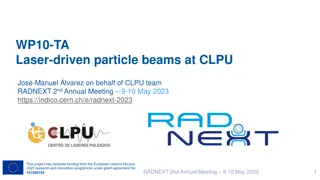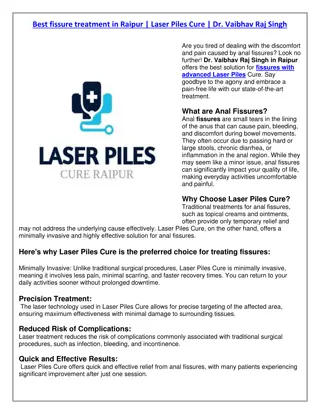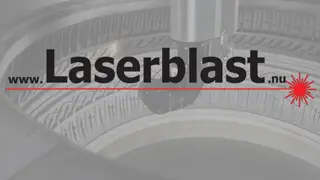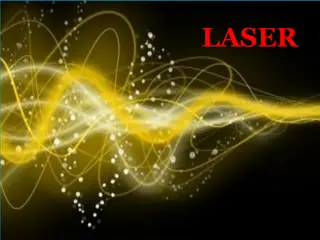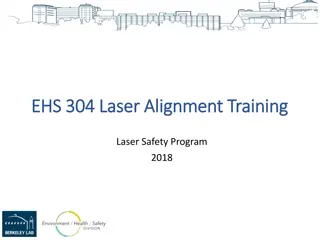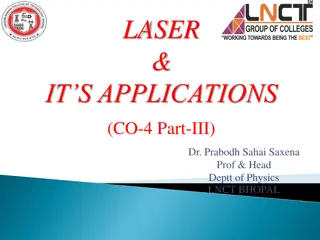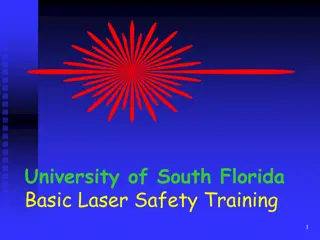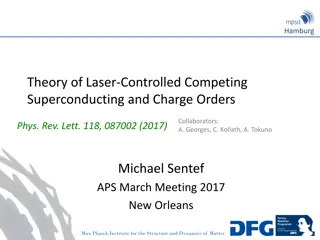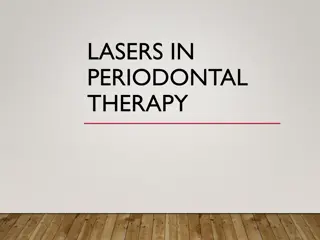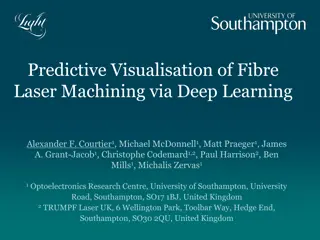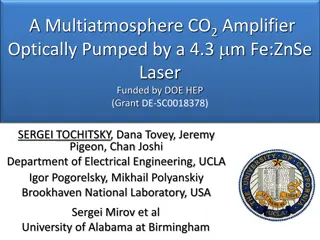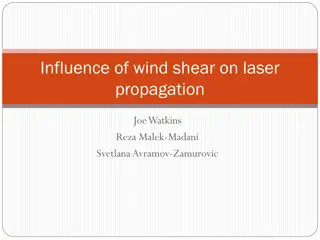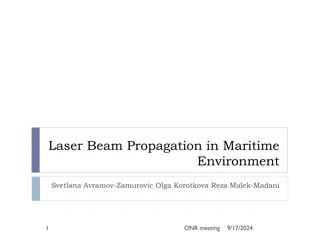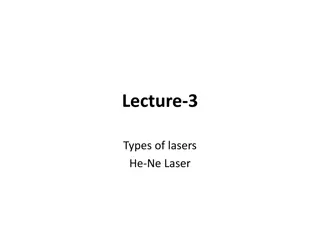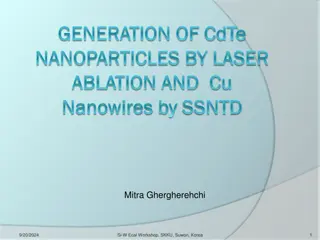Understanding Laser Technology and Its Applications
Explore the construction, working principles, and applications of Ruby and He-Ne lasers in this informative content. Learn how these lasers achieve population inversion and produce laser emissions for various purposes such as communication, industry, medicine, and military operations. Discover the drawbacks associated with Ruby lasers, including their pulsed output nature, low efficiency, and high pumping power requirements.
Download Presentation

Please find below an Image/Link to download the presentation.
The content on the website is provided AS IS for your information and personal use only. It may not be sold, licensed, or shared on other websites without obtaining consent from the author. Download presentation by click this link. If you encounter any issues during the download, it is possible that the publisher has removed the file from their server.
E N D
Presentation Transcript
LASER & IT S APPLICATIONS (CO-4 Part-II) Dr. Prabodh Sahai Saxena Prof & Head Deptt of Physics LNCT BHOPAL
Construction and working of Ruby laser Construction and working of He-Ne laser Applications of lasers (a) Communication (b) Industry (c) Medicine (d) Military operation
In ruby laser a cylindrical ruby rod made up of aluminum oxide(Al2O3) which is doped with 0.05% weight of chromium oxide(Cr2O3). The rod is surrounded by a glass tube which in turn is surrounded by the helical flash lamp filled with xenon gas. One end of rod is fully silvered and the other one partially silvered so it act as optical resonator. This is three energy level system. Active medium is Cr+3 Ions. Population inversion is achieved by optical pumping. Cr+3 Ions are responsible for pink/red colour.
Working of Ruby Laser When the flash lamp light will be flashed on ruby rod the chromium ions excited to higher energy states (E3) from ground energy state (E1). The transition from E1 to E3 is the optical pumping transition. After staying for up to 10-8 second ions get transmitted to the metastable state(E2). The transition from E3 to E2 is the radiation less transition. Metastable state (E2) is long lived state (life time 10-3sec). Hence the number of Cr+3 ions goes on increasing in E2. Thus population inversion achieved between E2 and E1. Transition from (E2 to E1) is the laser transition of a wavelength of 6943 and laser emission is pulsed one.
Drawbacks of Ruby Laser are as follows. The Laser output is not continuous but in the form of pulses of microsecond. Low efficiency because only green components of pumping light is utilized. Required high pumping power because laser transition terminates at the ground state. Defects present due to crystalline imperfection.
He Ne laser is a four energy level system. A He-Ne laser consists of large and narrow discharge tube filled with helium and neon gases in the ratio 10:1 at a low pressure. The tube is enclosed between fully and partially reflective mirrors which serve as optical cavity. Population inversion is achieved by electric discharge. Electric discharge is produced in gas by using electrodes. The two end windows are set at Brewster's angle, so reflected radiations enter into the tube become polarized.
The electrons from the discharge collide with and pump the He and Ne atoms to excited state 20.61eV (2s). power is switched on, Helium atoms after transferring their energies (0.05eV additional energy) to neon atoms & ne atoms are excited from 20.61eV (2s) to 20.66 eV (3s). 20.66 eV (3s) is a metastable state of ne atoms.
When Ne atom passes, from Metastable state to an excited state of 18.70 eV (2p) it emits a photon of wavelength 6328 . This photon travels through the gas mixture and move back & forth by mirror ends along the axis of the tube and stimulate the ne atom. The population in this level 3s is more than those in lower levels 2p and 3p. The emission of radiation having wavelength 6328 is red in colour and it gives continuous emission of radiation.
Power needed for excitation is less because laser transition does not terminate at the ground state. Operate in CW mode (continuous wave) instead of pulse form output. High efficiency as compare to Ruby laser. Active medium in form of gas. So, impurities in active medium is minimum.
Laser in Communication In optical fiber communication laser bandwidth is very high compared to the radio and microwave communications. As it has large bandwidth, more amount of data can be sent. More channels are simultaneously transmitted. lasers are also used in other communication devices.
Lasers can be used to blast holes in diamonds and hard steel. Lasers can cut, drill, weld, remove metal from surfaces and perform these operations even at surfaces inaccessible by mechanical methods. Lasers range finder is used to measure distance to making maps by surveyors.
Co2 laser is particularly used in spinal and brain tumour excision and kidney stone extrusion. New kind of laser surgery that uses molecules to stitch together wounds . Argon and Co2 lasers are used in treatment of liver and lungs . Lasers are used in the treatment of Glaucoma.
The laser can also repair a detached retina. one that has broken loose from the rear part of the eyeball . The laser is very useful in removing extraneous blood vessels that can form on the retina. the thin, light- sensitive membrane at the back of the eyeball



